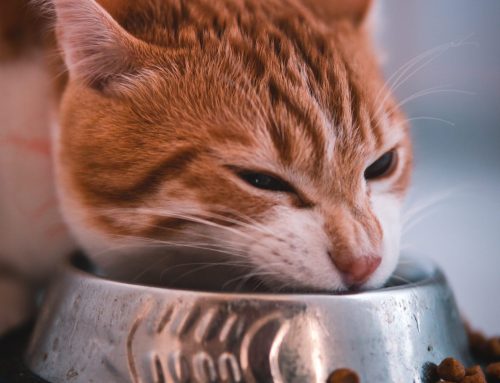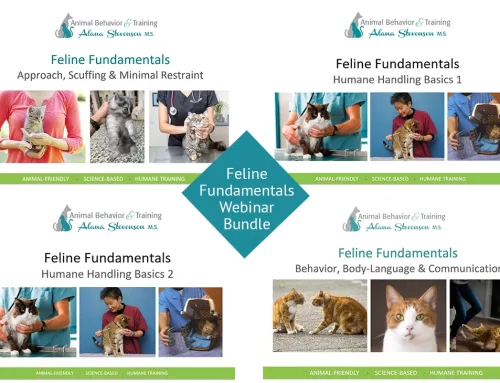 Many of us scruff cats, having learned that this is how mother cats carry their kittens, or it’s what we’ve observed others do—at the groomer, vet, shelter, and even at home. Fortunately, there are other ways to pick up and handle cats.
Many of us scruff cats, having learned that this is how mother cats carry their kittens, or it’s what we’ve observed others do—at the groomer, vet, shelter, and even at home. Fortunately, there are other ways to pick up and handle cats.
Scruffing can exacerbate behavioral issues and make handling more difficult—and even harmful—over time. Although mother cats will carry their newborn kittens by the back of the neck to relocate them, they only do this when their kittens are very young and mostly immobile. Mother cats are sensitive to the amount of pressure they use while carrying their kittens, and mother cats do not have any alternative.
It’s important to support kittens. Kittens should nurse in a natural position (on their stomachs with their heads slightly elevated—not upside down on their backs). They should be carried with their body and hind end being fully supported. It’s easy to pick kittens up by the middle and let their legs dangle, but this isn’t pleasant or healthy for them. Scruffing or mishandling kittens can make them more wiggly the next time you try to pick them up—and more fearful of being handled.
Often we can use gentle touch, towels, and other handling techniques to control cats without scruffing them. Cats fearful in carriers can be gently covered with a towel and, if the carrier opens from the top or has multiple access points, can stay inside during exams. Supporting cats in a football hold can help prevent them from squirming. We can rest our hand on their head or back of their neck so they remain still as opposed to hanging cats by the scruff.
By being gentler, many cats are less reactive or aggressive. Our body language also affects cats. Approaching cats from slightly behind them or next to them, as opposed to facing them directly or approaching them from the front can prevent cats from panicking. Gentle touch—as opposed to poking or prodding—can help prevent over-arousal and stress. Quiet handling, slow movement, and soft, non-slip surfaces help keep cats calmer and prevent them from becoming aggressive.
When handling a cat, it’s also important to save more stressful procedures for last, whether clipping nails, removing matted fur, or cleaning ears. Counter-conditioning helps teach cats that touch doesn’t have to be stressful, and procedures don’t have to be traumatic.
Alana Stevenson and Dr. Coryn Vickrey demonstrate some alternatives to scruffing cats.
© 2018 Alana Stevenson.
Black kitten © Catalina Zaharescu
To learn more humane cat handling techniques, read The Good Cat Parent’s Guide to Feline Behavior Modification or see the Cat Behavior & Training Tutorials.





